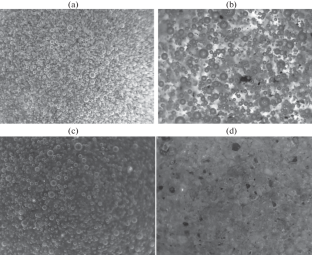用于机器维修的环氧砂复合材料的使用性能
IF 0.4
Q4 METALLURGY & METALLURGICAL ENGINEERING
引用次数: 0
摘要
摘要 介绍了用于修复筑路机械部件的环氧砂复合材料性能的一系列实验研究结果。评估了颗粒填料预处理对复合材料性能和结构的影响。研究了环氧砂复合材料在恶劣环境(除冰剂)中的稳定性。测定了环氧砂复合材料的摩擦系数。研究发现,降低填料浓度可提高环氧树脂-砂复合材料在恶劣环境中的耐受性和最佳耐磨性。本文章由计算机程序翻译,如有差异,请以英文原文为准。


Service Properties of the Epoxy–Sand Composites Used for Machine Repair
The results of a set of experimental studies of the properties of epoxy–sand composites used to repair parts of road-building machines are presented. The effect of the pretreatment of the particulate filler on the properties and structure of the composite was evaluated. The stability of the epoxy–sand composites in a harsh environment (deicing agent) was studied. The friction coefficients of the epoxy–sand composites were determined. It was found that a decrease in the filler concentration provides better resistance of the epoxy–sand composites to harsh environments and the best wear resistance.
求助全文
通过发布文献求助,成功后即可免费获取论文全文。
去求助
来源期刊

Russian Metallurgy (Metally)
METALLURGY & METALLURGICAL ENGINEERING-
CiteScore
0.70
自引率
25.00%
发文量
140
期刊介绍:
Russian Metallurgy (Metally) publishes results of original experimental and theoretical research in the form of reviews and regular articles devoted to topical problems of metallurgy, physical metallurgy, and treatment of ferrous, nonferrous, rare, and other metals and alloys, intermetallic compounds, and metallic composite materials. The journal focuses on physicochemical properties of metallurgical materials (ores, slags, matters, and melts of metals and alloys); physicochemical processes (thermodynamics and kinetics of pyrometallurgical, hydrometallurgical, electrochemical, and other processes); theoretical metallurgy; metal forming; thermoplastic and thermochemical treatment; computation and experimental determination of phase diagrams and thermokinetic diagrams; mechanisms and kinetics of phase transitions in metallic materials; relations between the chemical composition, phase and structural states of materials and their physicochemical and service properties; interaction between metallic materials and external media; and effects of radiation on these materials.
 求助内容:
求助内容: 应助结果提醒方式:
应助结果提醒方式:


